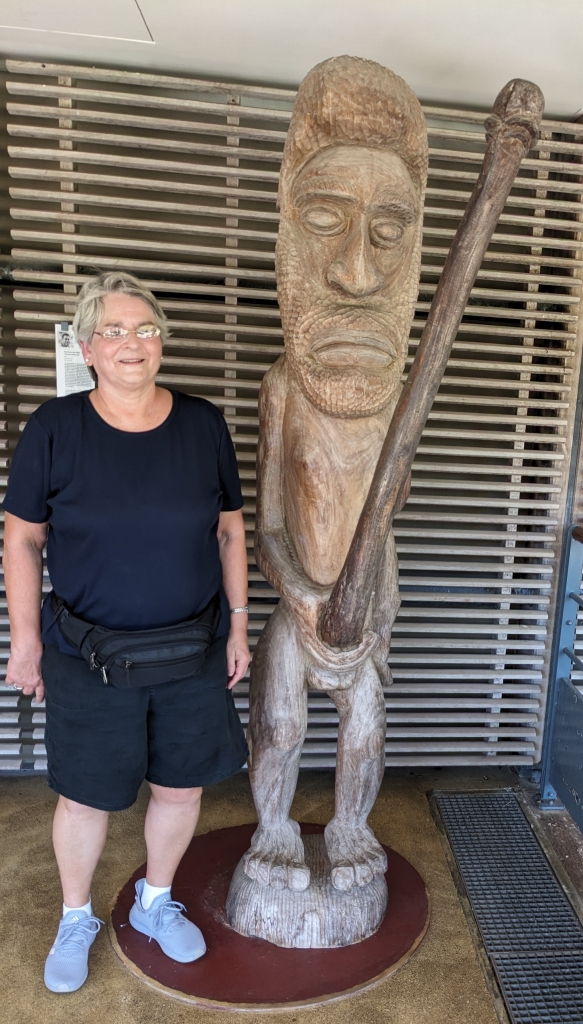New Caledonia is different than the other S. Pacific Islands we have visited. I don’t have much of a grasp, but I know that during WW II, the US took over the island and made it a supply depot. There were more than a million GIs plus various Australians and New Zelenders. They quickly overwhelmed the 55,000 Kanuk (as the island natives are called). There was some kind of a “free the natives” movement in the 1960s. One of the leaders was Tjibaou. He was assonated. Later the populous built the Tjibaou Cultural Center.
Much of the cultural center is in French, and Google translate does a poor job of letting us read the placards. But we still learned a lot. The one exhibit everybody sees is the Story of Olal, which goes like this:
A long time ago, all the men wanted to have sex with an Olal woman who enjoyed love making. But his woman didn’t feel well. In all of the north Ambrym villages men spoke of her. In Wisal, a village situated in the region of Willit, a giant with a long penis heard this story. So he went up to Mount Tuvio clearing a path with his penis. Then he ran to Olal to plant his penis into this woman. Carried away by his own momentum, he broke the reef with his penis. Half the reef moved west to Magam whereas the other half went east to Barereo. This is how Olal pass was opened. The giant and the woman threw themselves into the sea. Since then, they both live outside the reef of Olal Bay.

One of the exhibits I enjoyed was a petroglyph often found near the source of water. The spiral is assumed to stand for fertility or fecund crops or something similar. If you go to the website, you sill see a picture of the petroglyph plus a couple of modern art works inspired by the petroglyph.

This Lapita pot helps establish the arrival of the Kanuk in 1200 BC.

We also visited the maritime museum. We saw a lot, but the most unbelievable exhibit was about the La Monique, which went down with all hands. The only item found from the ship is a single life saver. What’s so unusual about a ship going down? This ship went down in 1953. They were equipped with a modern radio and four radio operators. Unfortunately, radio signals were monitored only at specific times. Monitoring was significantly reduced on weekends. If you send an emergency signal and nobody hears it, was the signal ever sent?

We have a couple of sea days. Our next stop is Brisbane, Australia.
